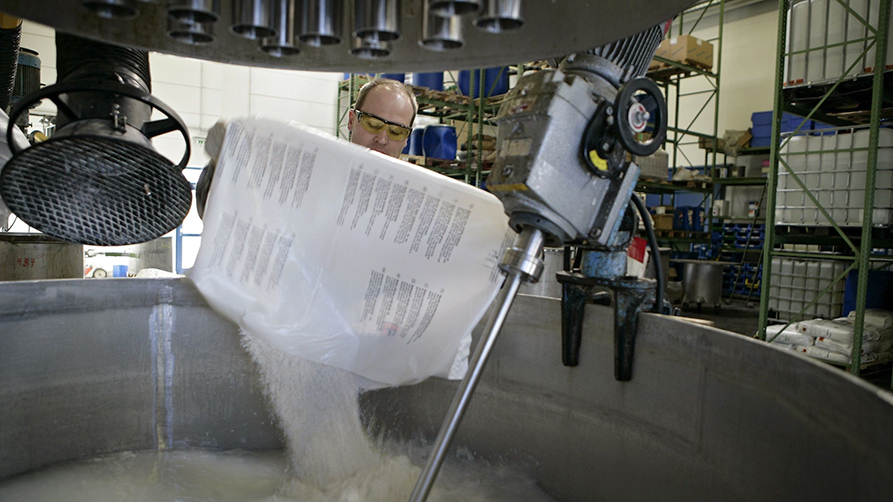Designing safe working practices for hazardous substances.
Hazardous substances are substances or mixtures that are potentially hazardous or harmful to humans or the environment. The aim of the tasks and measures realised by BAuA is to ensure the safe handling of chemicals and materials.

Hazardous substances have specific physical, chemical or toxicological characteristics. For example, they may be highly flammable, poisonous, corrosive or carcinogenic.
To ensure the safe handling of hazardous substances, a series of laws, regulations, tasks and measures operate at the state, national and EU level as part of a complex risk management system.
Federal Office for Chemicals
The Chemicals Act (ChemG) appoints BAuA as the Federal Office for Chemicals (BfC) and, as such, as the statutory body for tasks under the REACH, CLP and Biocidal Products Regulations. In accordance with the key elements of the REACH Regulation, these tasks include the
- registration,
- evaluation,
- authorisation and
- restriction
of substances.
As part of the authorisation of biocidal products, the BfC is responsible for ensuring that biocides are only placed on the market if they can be handled safely. Active substances are evaluated and authorised in a two-stage process.
If substances are assigned to specific hazard classes, then specific measures usually apply to the use of these substances. Risk minimisation measures are chosen based on the results of extensive risk assessments and taking account of socio-economic factors, which can be estimated and evaluated using, for example, the "Socio-Economic Analysis (SEA)" instrument.
Easy-to-use workplace control scheme for hazardous substances
Practical guidance on risk assessment and the implementation of suitable protective measures are key prerequisites for protecting workers' health in activities involving hazardous sub-stances. In this context, it is important that hazards presented by hazardous substances can be identified quickly and associated with suitable protective measures. BAuA provides practical guidance in the form of the "Easy-to-use workplace control scheme for hazardous substances" (EMKG). The EMKG includes all potential hazards due to inhalation and skin contact as well as fire and explosion hazards. In a systematic approach companies are allowed to identify hazards associated with the handling of hazardous substances, as well as the correct measures to reduce exposure.
Biomonitoring
Biomonitoring is an important tool in occupational medicine for ensuring the safest possible design of work involving hazardous substances. It identifies individual forms of exposure, contributes to the assessment of working conditions and helps with the evaluation of occupational safety measures with a view to preventing health damage due to chemicals.
